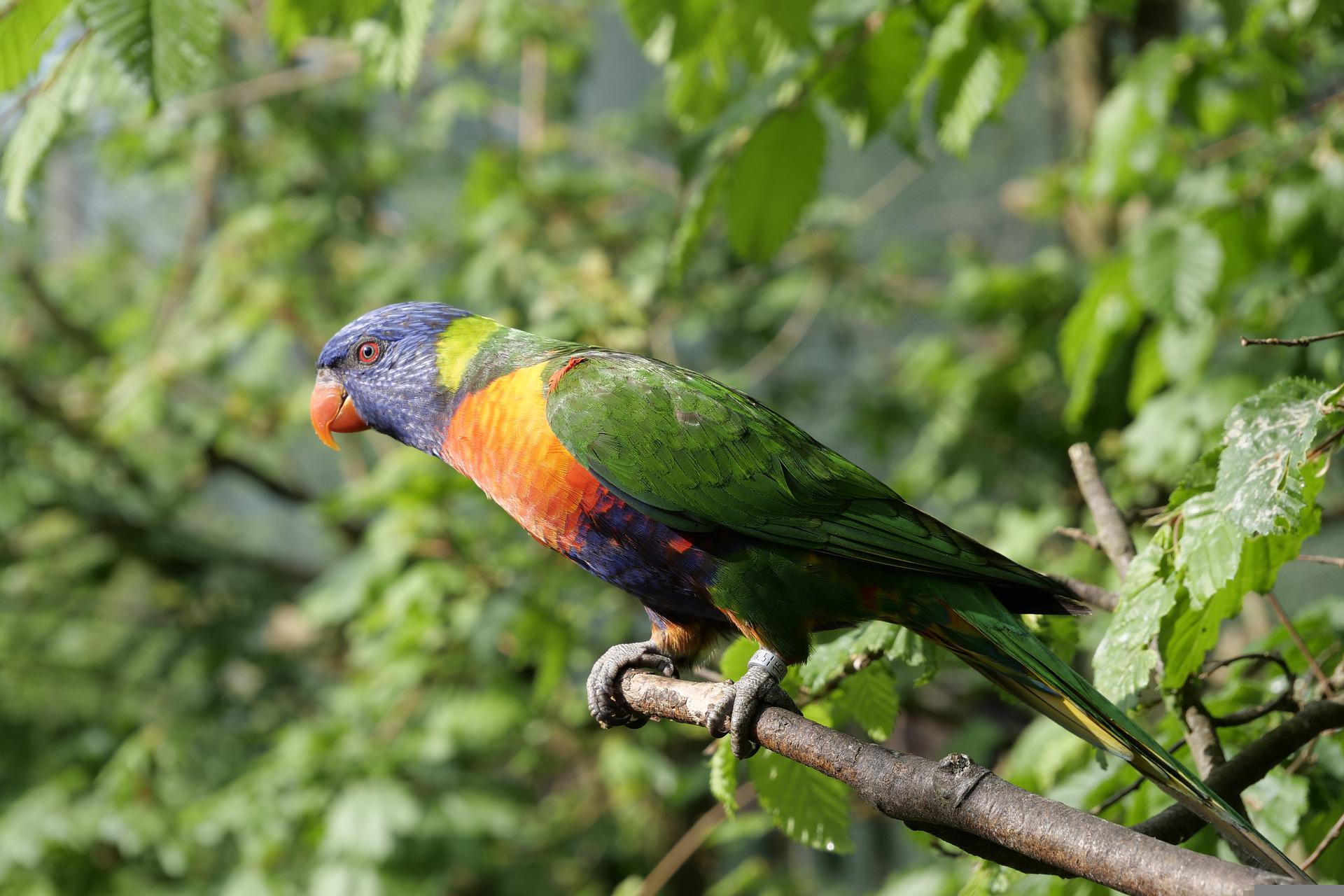INTRODUCTION
The Rainbow Lorikeet is a species of parrot found in Australia mainly along the Eastern seaboard. Lories and Lorikeets are found in rainforests and coastal bush areas, and in the suburbs of cities like Sydney, Newcastle and Brisbane are part of the suburban environment, where they feed on the native plants and chatter amongst themselves. The Rainbow Lorikeet has been introduced to Tasmania and parts of New Zealand, and as far away as Hong Kong. To see a list of Lories and Lorikeets For Sale, click here.
BIRD SPECIES
The Rainbow Lorikeet was accidentally released into Western Australia in the 1960s and has since been classified as a pest, as they compete with the local Honeyeaters for food. They usually travel together in pairs, defending their feeding and nesting areas and mating for life.
The species include the red-collared or scarlet-breasted Lorikeet and coconut Lorikeet.
LIFE SPAN
Some larger Rainbow Lorikeets have lived for longer than 25 years, while smaller ones live 12-15 years. Males and females actually look identical and DNA analysis of the feathers is required to determine the individual sex of the bird.
To see a list of Lories and Lorikeets For Sale, click here.
WINGSPAN
The weight of a medium-sized parrot is two and a half to three and a half ounces. The wing span is 20 to 30 cm.
The bird is very colorful with a deep blue head and yellowish collar, while the belly is deep blue, and the wings, back, and tail are green. The chest is orange and yellow. The chicks have a black beak and this changes to orange in adulthood.
DIET
The Lorikeets feed mainly on fruit, nectar, and pollen. They also consume the fruits of the fig and spread the seeds. They love sunflower seeds in the home garden feeders, and the shape of their beaks enables them to feed on mangos already opened by the fruit bats. They tend to become quite tame, and in some places, they will land on your arm to be hand fed.
PERSONALITY
They readily adapt to people and come into the garden to be fed. Many people keep them as pets as they are widespread and friendly and seem to adapt to life with a family. When feeding them nectar in captivity it must be specially prepared to meet their dietary needs, Lories and Lorikeets require a specific formula to keep them healthy.
THE BILL
When you look at the bill, it gives a clue as to the bird’s identity. The bill is brownish/red and downward curving. The Lores are not part of the bill but are the space between the bird’s bill and the edge of his eyes.
BEHAVIOR
When the bird flies he flies fast and often quite low, and if you are out walking near their favorite Grevillias they will swoop past you sometimes clipping the side of your head. They seem to have the same flight path from nest to food and back again. They continually defend their territory against the native Minors, chasing them away when they can. They also take on the larger birds like Magpies, and sometimes a standoff ensues.
To see a list of Lories and Lorikeets For Sale, click here.
They are interesting birds, and colorful to observe in the suburban bushland along the coast.
Click here to stop your bird from biting and here for info on how to care for your pet bird.
